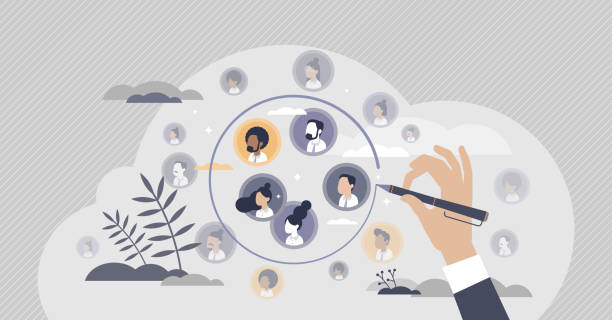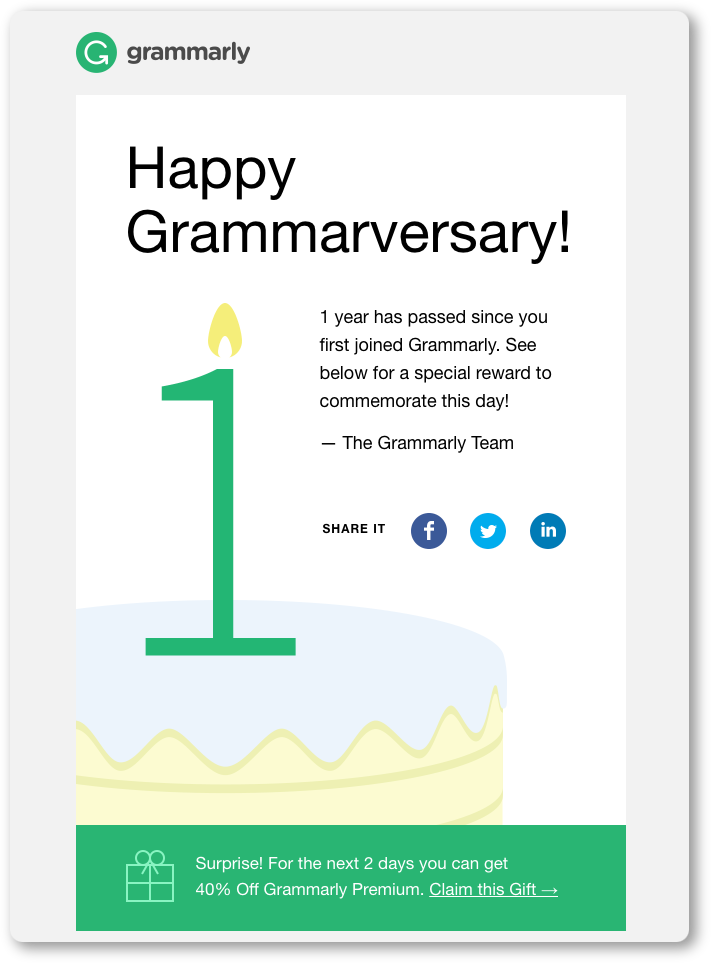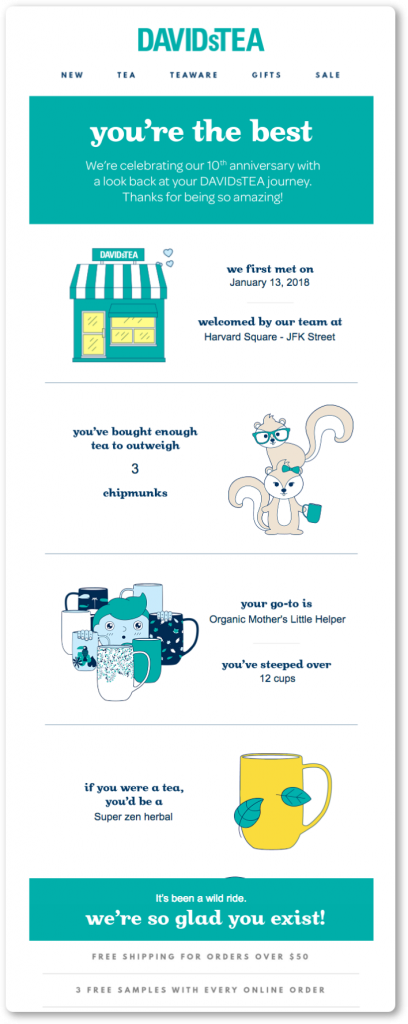Why You Should Start Using Behavioral Segmentation in 2022 and Beyond
Today’s users are more informed than ever before which is why the importance of uniqueness and personalization in appealing to them cannot be emphasized enough. Luckily for you though, the best way to incorporate both of these concepts in your marketing strategy is user segmentation.
In a recent survey, 80% of respondents said they would be inclined to do business with a brand that would personalize their experience. These results demonstrate that user segmentation is essential for a higher profit margin, a higher retention rate, and a more significant number of loyal customers.
It is possible to segment your users according to different characteristics. That said, behavioral segmentation is one of the most valuable and effective segmentation methods.
Behavioral segmentation does not just detect that users tend to differ from one another. It also uses these trends to optimize marketing campaigns.
If you want more detailed information about behavioral segmentation, you are in the right article. In this article, you’ll find everything that will help you further understand behavioral segmentation and how you can start using segmentation to increase personalization.
Why Not Simplify Your Analytics?
Track key metrics, identify trends, and mitigate risks with greater visibility into your marketing, sales, and product data
Try HockeyStack Today
What is Behavioral Segmentation?
Behavioral segmentation divides users into various segments based on their purchasing behavior. You can determine these segments according to the users’ general knowledge about the brand or the tendency of the users to purchase only on special occasions. In this way, your segmentation strategy takes precedence over demographic information and allows you to execute a more successful marketing strategy with more specific segments.

Why Behavioral Segmentation Is Important?
Behavioral segmentation is of great importance for your marketing strategy as it helps to categorize users more accurately. It determines your brand’s position in your users’ eyes and allows you to increase this position with the right strategies.
- A more dynamic segmentation method: Segmenting your users by demographics alone won’t provide enough of the personalization your users expect. This is because people’s demographics don’t change very often. However, their needs and wants are constantly changing. Purchasing behaviors are also shaped within the framework of these wishes and needs. Behavioral marketing is a more dynamic segmentation method based on purchasing behaviors.
- Personalized experiences: More dynamic information-driven segments bring a more personalized marketing experience. For example, frequent exposure to promotions tailored to their needs increases the likelihood of users making a new purchase. Likewise, encouraging users to purchase with a personalized email campaign also speeds up your users’ purchase journey. Knowing your users’ needs, wishes, and expectations will make it easier to follow a path accordingly.
- Increases brand loyalty: When you manage a marketing process based on your users’ behavior, your users will feel that their wants and needs are valued. This will inevitably increase their loyalty to your brand. Depending on the increase in your brand loyalty, it is very likely that you will observe an increase in the users’ lifetime values and retention rates.
4 Types of Behavioral Segmentation
Behavioral segmentation is divided into four subcategories based on different user behaviors: Usage Frequency Based Segmentation, Occasional Segmentation, Benefits Sought, Loyalty Segmentation
Usage Frequency Based Segmentation
A segmentation based on product usage frequency or frequency of purchase is one of the common ways you can use to segment users. You can categorize users according to their frequency of product use as follows:
- Ideal Users: These users use your product frequently and immediately make a new purchase when a new product or upgrade is available. These users constitute your company’s most loyal and most satisfied user base.
- Medium Users: These users use your product regularly. However, they are not as enthusiastic about your product as your ideal users. They make purchases in line with their needs, but sometimes there may be a time delay between the moment of demand and the moment of purchase.
- Light Users: Light users purchase your product sporadically and have a high dropout rate.
- Non-users: Anyone found in this category is not a user of your product. However, they show interest in your product. So your potential users are in this segment.
Segmenting your users in these ways will be especially effective in your email campaigns. For example, you can create an email campaign targeted at users who have viewed your product but have not yet made a purchase.
Thanks to behavioral segmentation, you can send emails highlighting your products’ features to these users to increase their likelihood of making a purchase. Thus, you remind them of those products and trigger the purchase. Similarly, you can analyze the activity status of your users with the open rates of your emails. So, you can align your marketing strategies more closely with their customer base.
Occasional Segmentation
Recognizing how purchasing behaviors change depending on the time of the year will be a big step in your marketing strategies. The main reason for this is that certain occasions are directly related to users’ emotional states. If you can direct the emotional state of your users at the right moment, you will establish a much more meaningful user-product relationship. For example, many companies look for financial software towards the end of their fiscal year. If you are a financial writing company or offering a solution in this field, offering this solution to companies at this time will significantly increase their chances of purchasing.
Occasional segmentation is best for personal timings, such as birthdays or anniversaries. Offering discounted offers or other deals on these special days will positively affect your purchase rate.
Benefits Sought
Different people often have different expectations for the same product. User classification based on these differences is called benefit segmentation. Presenting different offers for these users with different expectations, such as offering pricing that includes other features or highlighting different product features, strengthens the idea that users will find what they expect. This provides a more personalized user experience, optimized customer journey and higher customer success.
Loyalty Segmentation
Customer loyalty is the foundation of company success. Users who have positive experiences with your product are eager to become users of that product when you launch a new product. In addition, loyal users can advocate for your brand and even recommend your company to other potential users.
Loyalty segmentation aims to identify loyal users of your product and follow a strategy for these segments. For example, you can take your email marketing to the next level by sending a “thank you for being with us” email to loyal customers on the anniversary they started using your product or service.
How Can Behavioral Segmentation Help You Target Your Customers Better?

Behavioral segmentation helps you identify users in your target audience more efficiently because this type of segmentation relies entirely on user behavior analytics. User behavior analytics (UBA) is a business analytics concept that enables you to examine and generate insights based on your customers’ behavior on your website, mobile app, email, or other digital channels.
Every time your users interact with your channels, you can use user behavior analytics to detect necessary signals about those users. In the light of these signals, you can determine which segment your user is in and their future purchasing potential. In this way, you can shape your marketing strategy.
The primary purpose of user behavior analytics is to analyze what stage of the customer journey customers are at, what interactions they will have in the next step, how they will take action, and what obstacles will come in their way. In this way, it becomes easier to anticipate users’ needs and act accordingly. In addition, combining results from user behavior analytics with data from demographics and past transactions allows you to gain much richer insights.
For all these reasons, user behavior analytics is beneficial when creating behavioral segmentation, targeting new users, and determining strategies to enable existing users to purchase.
Types of Data that User Behavior Analytics Use
User behavior analytics provides user-level data. When providing this data, it usually groups raw data from various sources as follows:
- Registered Data: Data collected through your customer relations marketing and other marketing strategies
- Observed Data: Data collected through user experiences on your website and other digital channels
- User’s voice: How your users feel about your product and their purchase
Steps for a Succesful User Behavior Analytics
Incorporating user behavior analytics into your segmentation process is essential. If this process is not managed correctly, you will not be able to provide the right insights and leverage the full potential of behavioral segmentation. That’s why you need to pay attention to the following stages in user behavior analytics:
- Set your success metrics, KPIs and goals
- Define the ideal user journey that gets you to your goals
- Determine which signals you should follow according to the user journey and what action you should take after which users’ behaviors
- Blend your behavioral data with your demographic and transactional data to segment your users
- Update the stages in user behavior analytics periodically according to your user segments.
Examples of Behavioral Segmentation
Behavioral Segmentation Baserd on Usage Frequency
Take any ridesharing service to give an example of segmentation by frequency of use. Employees who do not have a car and do not work remotely, one of the target groups of this service, will benefit most from this service during the beginning and end of work hours on weekdays.
In such a case, the ridesharing company can implement various strategies to encourage this user segment to share a ride on the weekend.
For example, it can offer these users a discount for a certain period for the weekend. Or, if users avail of the service a certain number of times over the weekend, they can be eligible to win a gift or get a discount for the following week. Making the right offers to the right segment can increase customer engagement, user retention, and profit margin.
Occasion Based Behavioral Segmentation

The critical thing in this type of behavioral segmentation is to follow a strategy for a particular time or situation. For example, take a look at Grammarly’s email campaign. In this way, providing extra discounts to your users on the days when your users start using the product will both trigger your users to make a purchase. In addition, your users will feel valued thanks to these personalized marketing strategies. That will significantly increase your brand loyalty in the long run.
Benefit Segmentation

Benefit segmentation is based on grouping users according to the expectations of your products or services. Netflix is one SaaS company that uses benefit segmentation most frequently and effectively. Netflix aims for users to watch a certain number of Netflix shows each month. Watching a certain number of hours per month ensures that Netflix keeps user retention rates at an optimal level. For this reason, Netflix needs to direct each user to the content that best suits their consumption habits.
To determine the expectations of Netflix users from the platform, it follows what kind of content they consume, what time of the day they consume more content, and other similar data to make accurate deductions. Thus, it provides a much more personal user experience by recommending relevant content to its users.
Behavioral Segmentation Based on Customer Loyalty

User loyalty is of great importance for business continuity. For this reason, identifying your loyal users and creating targeted campaigns for them will increase your income and the number of users you keep.
David’s Tea is a Canadian tea company with an incredible example of how segmentation can work. As you can see above, on the 10th year anniversary of a customer’s relationship with the company, David’s Tea sends a “look back” email to make users feel unique and valued. A customer who receives this email will feel appreciated and remain a customer of this brand for a long time.
Behavioral Segmentation with HockeyStack
Using HockeyStack, you can build any dashboard you need with metrics from different departments. Custom dashboards allow you to connect the dots to better understand your customers’ purchasing behaviors, content preferences, and even their lifetime value.
For greater insights into how your product, revenue, marketing, and sales processes, you can even leverage HockeyStack’s integrations to answer any questions you may have. Here’s an example of how you can build a churn by the blog post user signed up report:

HockeyStack is a SaaS analytics and attribution platform used by 6900+ companies.
A report to measure the exact revenue you get from blog posts:

A trial to expansion funnel:

An engagement by feature report:

Or an active users report:

On top of custom dashboards, HockeyStack has other features too, such as
- Surveys
- Step-by-step user journey
- Funnels & goals
- Revenue Attribution
and more.
HockeyStack Pricing
You can check out the pricing page here.
HockeyStack Integrations
- Paddle
- Stripe
- Hubspot
- Crisp Chat
- Mailchimp
- Intercom
- Pipedrive
- Chameleon
- Salesforce
- Zapier (coming soon)
HockeyStack Summary
The unique benefit of HockeyStack is its ability to unify your marketing, revenue, sales, and product data using no code. This allows you to uncover unique insights that you wouldn’t be able to by using multiple tools as they cause you to have fragmented data.
- You can integrate with Stripe, Paddle, Hubspot and other SaaS platforms to build every single dashboard that you can think of, using all sales, marketing, revenue, and product metrics.
- You can create funnels, goals, and surveys, which are rare to get with other tools on this list.
- You don’t need any developers, tracking is cookieless, and the script is small, so it doesn’t increase your site loading time.
Conclusion
More and more companies are leveraging behavioral marketing strategies and segmentation for user acquisition, retention, customer relationship management, up-and cross-selling, onboarding, and more. Because behavioral segmentation enables users to generate more accurate insights into their true consumer identities, you can get one step closer to your goals and increase your profitability by adding behavioral segmentation to your company’s strategies. You can also blend behavioral segmentation with user reviews and demographic data to give your users the ideal experience.
FAQ
There are fundamental differences between behavioral and demographic segmentation. First, behavioral segmentation is a type of segmentation that is entirely dependent on users’ purchasing and consumption behaviors and habits.
On the other hand, demographic segmentation is a type of segmentation based on much more basic information such as the age, gender, and country of residence of the users. In addition, demographic segmentation operates with data about users that may change in the long run, and sometimes even never.
In contrast, behavioral segmentation is based on dynamic data that can change very quickly. The main reason for this is that the users’ thoughts, wishes, and needs change day by day and evolve into something else.
Behavioral segmentation has many advantages for companies. For example, behavioral segmentation improves targeting accuracy by optimizing marketing strategies. It also helps to analyze your target audience in depth. Thus, it personalizes the user journey. In addition, it optimizes your marketing budget as it promises a more accurate and precise marketing strategy. And last but not least, it significantly increases user loyalty. It is easy for users exposed to more personal campaigns to stay loyal to your brand and become an advocate of your brand.



